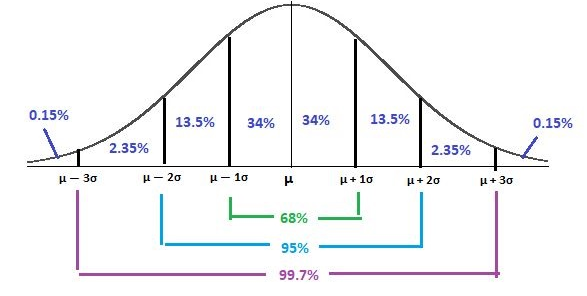The number of potholes in any given 1 mile stretch of freeway pavement in Pennsylvanla has a bell- shaped distribution. This distribution has a mean of 45 and a standard deviation of 10. Using the empirical rule, what is the approximate percentage of 1-mile long roadways with potholes numbering between 35 and 75?
Continuous Probability Distributions
Probability distributions are of two types, which are continuous probability distributions and discrete probability distributions. A continuous probability distribution contains an infinite number of values. For example, if time is infinite: you could count from 0 to a trillion seconds, billion seconds, so on indefinitely. A discrete probability distribution consists of only a countable set of possible values.
Normal Distribution
Suppose we had to design a bathroom weighing scale, how would we decide what should be the range of the weighing machine? Would we take the highest recorded human weight in history and use that as the upper limit for our weighing scale? This may not be a great idea as the sensitivity of the scale would get reduced if the range is too large. At the same time, if we keep the upper limit too low, it may not be usable for a large percentage of the population!

Empirical rule :
According to empirical rule ,
1) 68% of data falls within the first standard deviation from the mean
In mathematical notation, this is represented as: μ ± 1σ
2) 95% fall within two standard deviations
In mathematical notation, this is represented as: μ ± 2σ
3) 99.7% fall within three standard deviations.
In mathematical notation, this is represented as: μ ± 3σ
Graphically,

Trending now
This is a popular solution!
Step by step
Solved in 2 steps with 2 images









